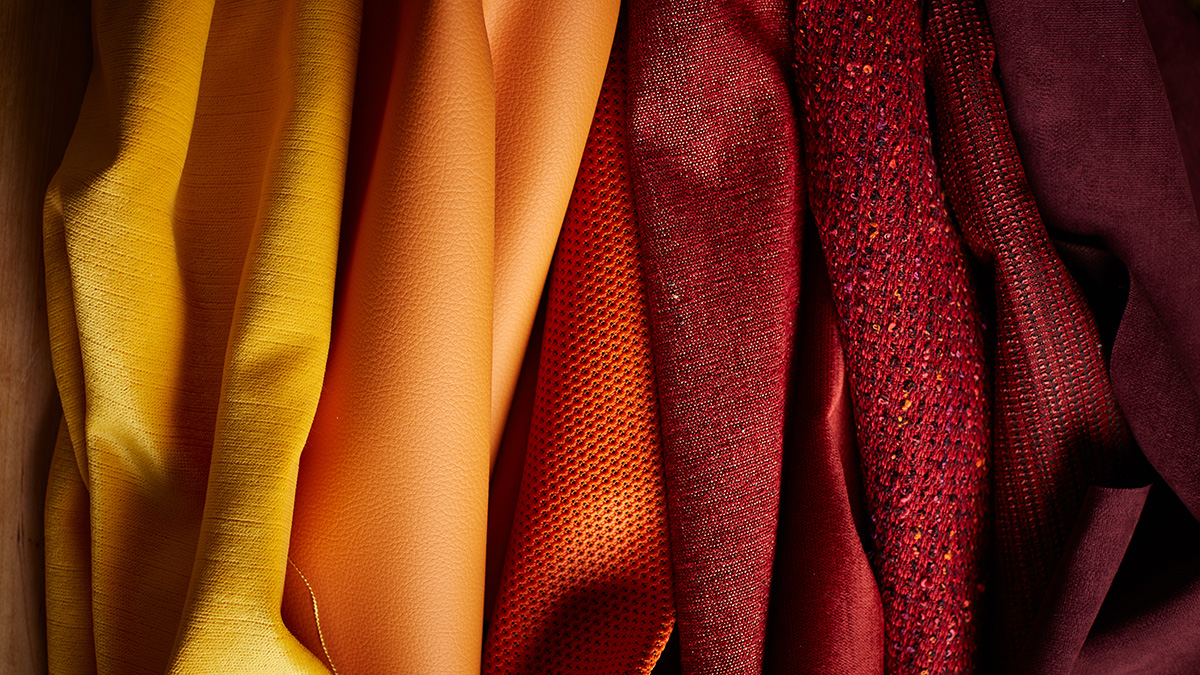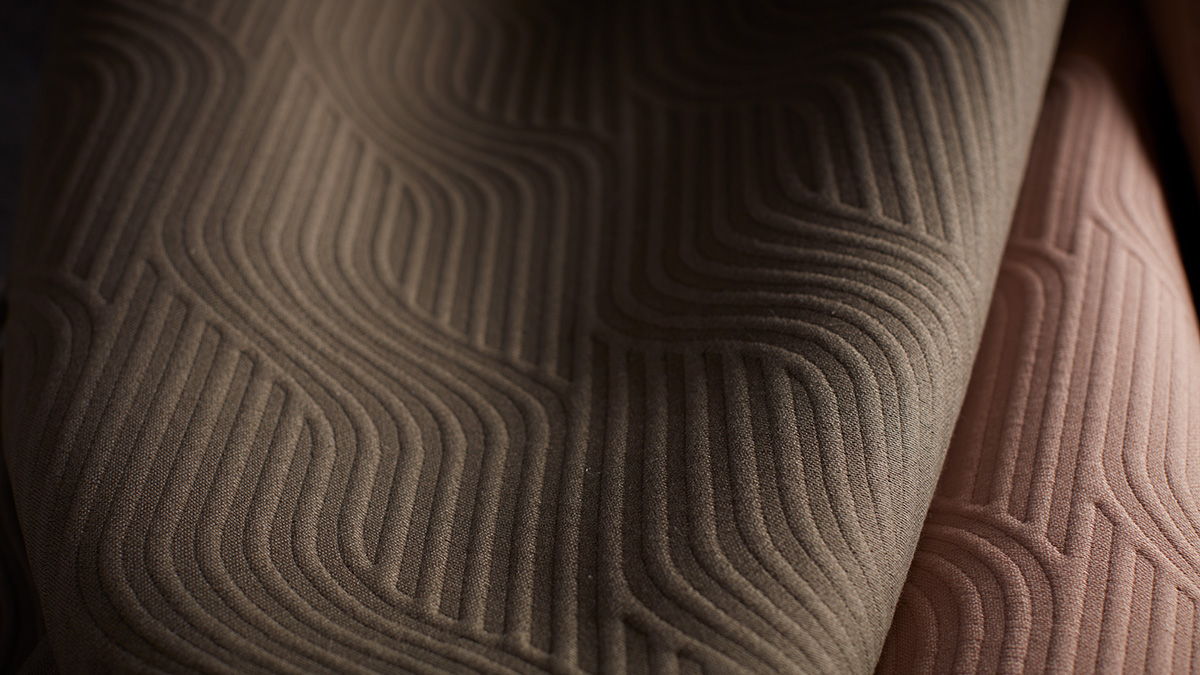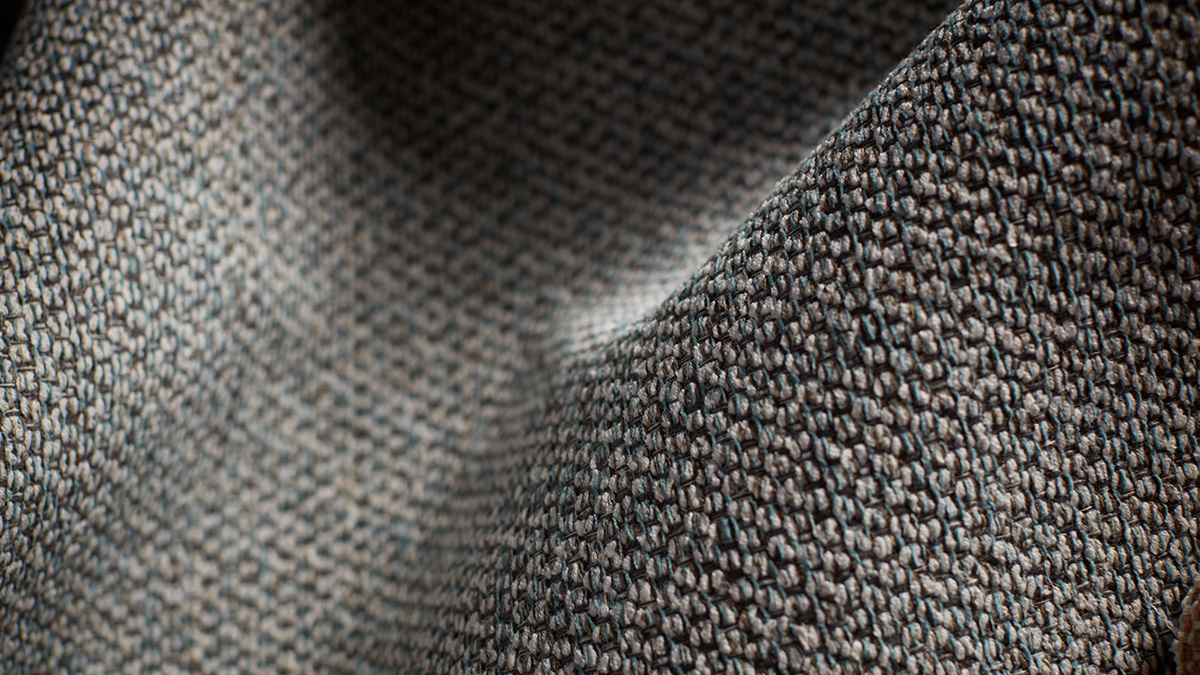Four Ways to Create Texture in Your Space
Blog • January 19, 2022

Touch. Feel. Appearance. These are some of the first things we notice when we enter and interact with a space.
As an element of design, texture refines a space -- it adds dimension and sophistication, ambience and interest. It can soften a room or create a more modern feel. Texture can support other design elements to emphasize a particular aesthetic and feel or it can subtly juxtapose them to add variety and balance to a space.
Let’s explore how texture plays with other design elements to elevate your experience within a space.
How Is Texture Created?
Texture starts at the ground level, in the very construction of a material. From the baseline choice of fibers, ranging from silky to chunky, to the final application of the finish, every step in the construction process influences the texture of the fabric.
Take the simplicity and immense versatility of single, ply and cord yarns. Or the varied undulations of natural fibers, like linen and wool, and texturized synthetic fibers. Mechanical and chemical finishing processes support everything from the organic feel of the nap to the performance of sheer gossamer.
The style and combination of yarns shape the textile’s structure including flexibility, firmness and weight. For instance, Sway from our forthcoming collection has a matelassé construction that incorporates heavier stuffer pics beneath the surface to create varied depth throughout the textile.

Ultimately, texture emerges from both the visual form of the fabric and its tactile sensation, the hand. Together, these aspects communicate whether a fabric is textured or smooth, shiny or matte, supple or firm, gauzy or substantial, sheer or opaque and everything in between.
Texture and Patterns
Designers also create texture through the use of patterns, adding depth and energy to a space in the process. Layering bold vibrant patterns with contrasting soft non-woven textiles, helps define the lounge pieces within a space. It’s important to consider scale when choosing patterns, perhaps pairing a smaller repeat with a larger one.
Textiles can bring pattern into a space or balance out existing ones. Graphic designs like Nomad and Arc might serve as a focal point, whereas the subtle nuances in Coco can act as a counter to bold patterns elsewhere in the room.
Texture and Layers
Layering textiles within the same space imbues it with a sense of complexity by allowing different textures and finishes to play off one another. Adding verse displays of dimensional textures upon poufs can augment a welcoming aesthetic while maintaining a sense of contrast.
Softer bouclé and chenille fabrics like Mix and Harmony, respectively, can complement more tightly looped textiles like Frieze. Brio from our forthcoming collection uses multifaceted, intertwined yarns to reveal layers of tactility and sheen within a single textile.

Texture and Materials
Just as one textile can draw out the qualities of another, it can do the same for other materials in a room. Velvet seating offsets the esthetic of an exposed brick wall in a loft, whereas lived-in black leather enhances it. Warm, light-colored woven upholstery for a booth can balance sterility of a corporate cafeteria.
Texture is ever-present in our lived environments. Consider what the materials in your space communicate, including carpet, flooring, staircases, fireplaces, light fixtures, crown molding, window frames, countertops, tables, cabinetry and more.
Texture and Color
Of course, color plays a role in all of these expressions of texture. When pairing patterns, it’s just as important to consider the color scheme so they don’t clash. When layering two or three fabrics, using different shades of the same color family can add texture in a cohesive way. Together, colors and materials dictate the entire mood and energy of a space.
Within a fabric, color itself can achieve visual texture. In Rove, a digitized printing process infuses layer upon layer of distinct color to create visual interest. The pattern employed in Awe is elevated through the use of different colors to impart a sense of dimension and movement.
The Finishing Touch
When employed thoughtfully in an environment, texture is a powerful tool for adding interest and character to your design. What elements inspire you to build texture into your designs?









